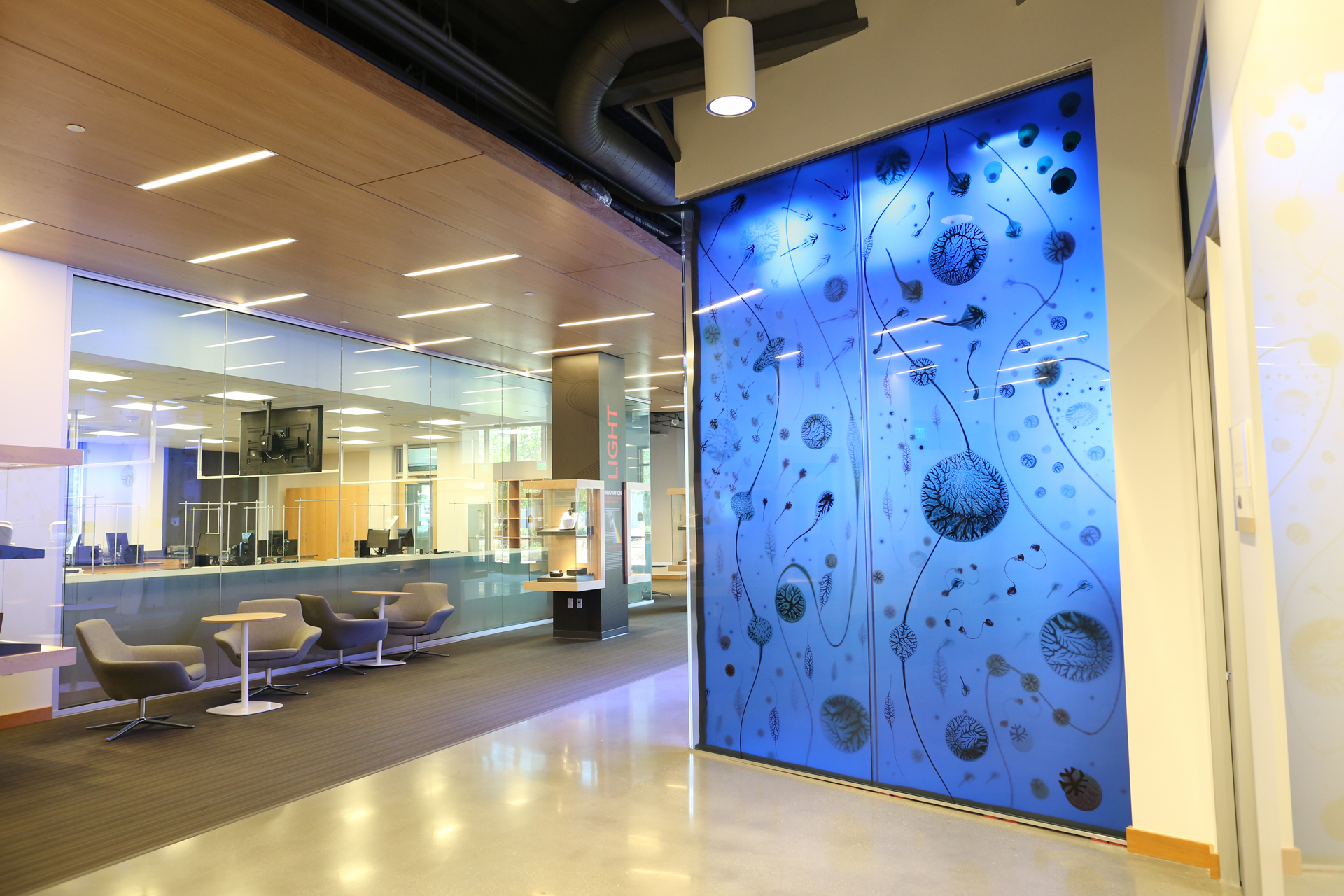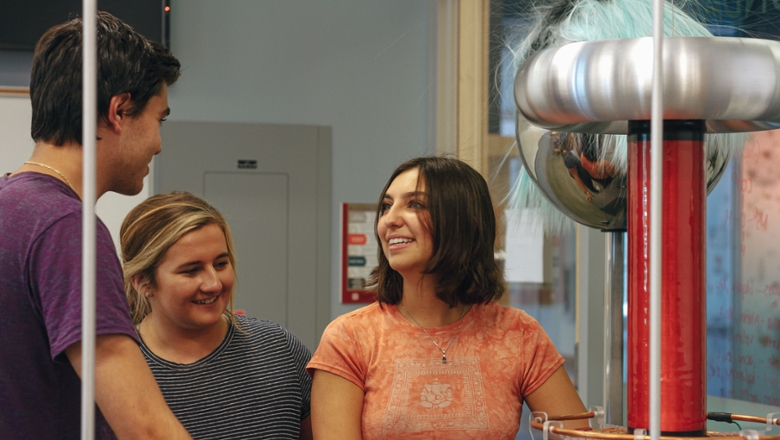GCI is supported by both its own GCI Makerspace – open 20 hours a week, including some evening and weekend times – and the Keck Center for Science and Engineering.
»Our Facilities
Makerspace
Traditional disciplinary boundaries are broken in the GCI Makerspace. One team may be working on a virtual reality game while the team next to them is getting ready to sequence DNA. Equipment in the space supports in-depth work in biology, chemistry, electrical engineering, environmental science, manufacturing and software engineering.
We have everything from 3D printers to virtual reality software to professional scientific equipment. Students in the GCI can even apply for small grants to purchase the materials that they need to realize their projects. You can learn more about some specific equipment below:
3D Printers
With Schmid College launching its new 3D printing class, Chapman students have just begun to explore the possibilities of this exciting technology. GCI students currently have access to:
- Two Ultimaker S5 3D Printers
- A Pulse XE 3D Printer
- Glowforge Pro 3D Laser Printer
- A Carbide 3D Desktop CNC Mill
- 3D Object Scanners
- Over 700 hand tools
Using our 3D printers, students have built an insulin pump, artificial bones, pieces for a musical laser harp and much more.
Digital Hardware
In addition to Alienware Desktop Computers, Flatscreen TVs, and Oculus Rift VR Headsets, the GCI makerspace gives students the opportunity to build interactive electronic devices using Arduino and Raspberry Pi open source hardware and software.
Students have used this hardware to make everything from video games to realistic simulations of the surface of Mars.
Additional Scientific Tools and Instruments
The GCI makerspace provides unique access to industry-standard fume hoods, microscopes, biological incubators, thermocyclers and standard microbiology equipment, giving GCI teams opportunities to conduct experiments and fully explore areas they’re curious about. Students use aquaria to study the effects of ocean acidification on algae and assay different antiseptic treatments to determine their effectiveness at killing bacteria.
Many schools don’t give their undergraduate students access to such instruments.
Oscilloscope with Waveform Generator and Soldering Station
Used to analyze the waveforms of electrical signals, this equipment has recently been used by a team developing an open source electrocardiogram monitor that measures the electrical activity of the heart.
Stereoscope with 5MP Digital Camera
Stereoscopes are fundamental for viewing objects in three dimensions rather than two. Students use this to visualize prototypes of 3D printed objects.
VIVE Pro and Oculus Rift Virtual Reality Headsets
These platforms for virtual reality experiences are popular in both scientific and gaming communities. Student teams often develop educational experiences using this equipment, including a series of lesson plans on astronomy for middle school students.
Matter and Form MFS1V1 3D Scanner
This scanner allows users to create a 3D rendering of an object fixed on the platform by taking digital photographs as the object rotates. Students have used this tool to create models of objects for virtual reality simulations.
Ultimaker S5 3D Printer
This tool has been used to build everything from wearable health technology to Halloween costumes for middle schoolers. 3D printers are creating new frontiers in materials manufacturing.
Gel Electrophoresis
This equipment allows students to separate DNA, RNA or other proteins based on their size. A fundamental tool for modern molecular biology, this equipment is often used by teams working on projects involving genetics.
Glowforge Pro 3D Laser Cutter
3D laser cutters are capable of cutting and engraving a number of different materials, including wood and plastics.
Carbide 3D Mill
This desktop CNC mill is used for manufacturing small prototypes of parts from foam, plastic or soft metals.
Keck Center for Science and Engineering
The Keck Center features state-of-the-art research laboratories and open collaborative spaces where students, faculty and research fellows can work together. Walking through the halls of Keck, you’ll see students writing on the walls and working together on plaza steps and outdoor patios.
A 140,000 square-foot building, the Keck Center has more than 25 research labs that students can use as they work toward their GCI goals.

Contact Us
GCI Program Co-Director
grandchallenges@chapman.edu
Alexandra Lewandowski
GCI Administrative Coordinator
grandchallenges@chapman.edu
Support the Grand Challenges Initiative
You can help our students undertake the most complex problems of our time by donating. Your support will help provide the resources they need to take on those challenges in concrete and meaningful ways.
